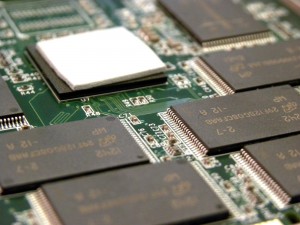If you’re buying a new data storage device, you’ll need to do some research. This is particularly true if you’re buying a solid-state drive (SSD). While SSDs provide better performance than hard risk drives (HDDs), different models have different features and capabilities — and different levels of reliability.
On SSD specification sheets, the number of maximum write cycles (also referred to as program-erase cycles and expressed as total bytes written) is one of the primary metrics used to evaluate SSD lifespans.
If you’re looking for a reliable device, write cycles are important, but not necessarily the most important factor to consider. Here’s what consumers should know.
1. All SSDs have a limited number of write cycles.
 SSDs are a type of flash memory. NAND flash devices use electricity to store data (our article on SSD garbage collection explains flash storage techniques in more detail).
SSDs are a type of flash memory. NAND flash devices use electricity to store data (our article on SSD garbage collection explains flash storage techniques in more detail).
As you write and erase data to your SSD, the transistors that hold electrical charges become less stable. Eventually, they aren’t reliable enough to store data. Modern SSDs use wear-leveling algorithms to ensure that all of the transistors receive a roughly equal share of the work, but even with advanced wear-leveling, every SSD will eventually become unreliable.
SSD manufacturers are certainly aware of this issue, and most hardware data sheets contain an estimated average of the number of write cycles that an SSD can sustain before it becomes unreliable. This is often expressed as total terabytes written (TBW).
For example, a 1TB SSD may have a 560 TBW — in theory, you could completely erase and rewrite the drive 560 times, on average, before data loss occurs.
Related: SSD Lifespans: How Long Can You Trust Your Solid-State Drive?
2. SSD write cycle metrics are not absolute.
Your SSD probably won’t fail at the precise point that it reaches a specified number of write cycles. TBW is an average, but many SSDs last much longer — albeit without the protection of the product warranties.
That’s also true of Mean Time Between Failures (MBTF), a metric that estimates the operating time (typically, in hours) before an SSD becomes non-functional. Modern SSDs may have a MTBF of 1.8 million hours — but your hard drive could fail much sooner or later, depending on dozens of factors.
3. Other SSD performance benchmarks may be more important for buyers.
If you’re purchasing an SSD for high-performance applications that require a tremendous number of write cycles, TBW is an important metric. For example, boot drives (drives that contain your operating system) write and erase data nearly constantly when operating. If you’re buying a boot drive, it makes sense to consider the drive’s endurance.
But most consumers will reach capacity limits and upgrade their SSDs long before the hardware begins to wear out. Performance metrics (such as sequential read/write speed) and total capacity are generally more important factors to consider when making your purchase.
4. Every data storage device will eventually fail.
 While consumers often focus on endurance metrics, it’s important to remember that every data storage device fails.
While consumers often focus on endurance metrics, it’s important to remember that every data storage device fails.
Most SSD manufacturers estimate an average lifespan of around 5 years, which is similar to the estimated lifespan for hard drives.
Currently, there’s no “perfect” option for data storage. Even if you carefully control your operating conditions and minimize write cycles, you’ll need to back up your data to keep it protected.
If you’ve lost data due to an SSD failure, we’re here to help. Contact Datarecovery.com at 1-800-237-4200 or click here to submit a case online.




